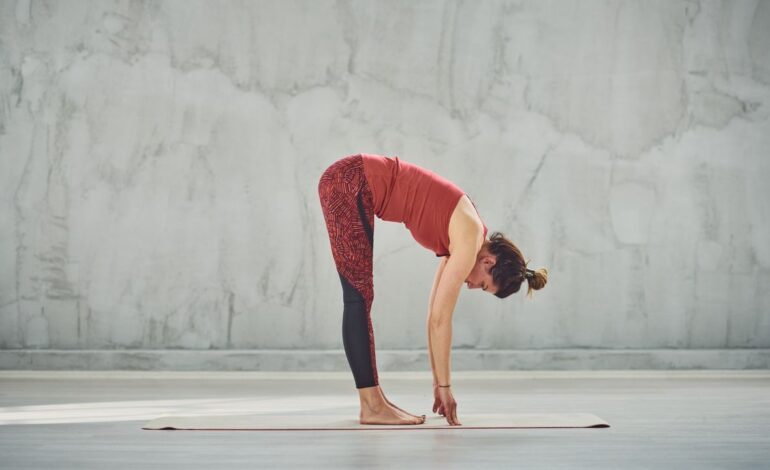Discover the Pilates Roll-Down: A Two-Minute Spine Reset

The Pilates roll-down has emerged as a popular two-minute exercise, praised for its ability to reset the spine and enhance overall mobility. This gentle movement, rooted in the original Pilates method, engages core muscles while providing a calming effect that can help improve posture and relieve tension.
Abby McLachlan, founder of the Pilates and yoga studio East of Eden, describes the roll-down as an effective way to reset the spine, making it a valuable addition to any Pilates routine. Whether performed at the beginning or end of a session, this exercise fosters a sense of focus and tranquility, helping practitioners prepare for or wind down from their day.
Understanding the Pilates Roll-Down
Although the roll-down is a straightforward exercise, there are specific techniques that can enhance its effectiveness. To perform the roll-down, follow these steps:
1. Stand with your feet hip-distance apart.
2. Begin to articulate your spine forward, starting from your head and allowing your arms to hang loosely.
3. Slowly lower your fingertips towards the ground, bending your knees as necessary until you reach full flexion in a forward fold.
4. Hold the position and focus on your breathing.
“It’s actually part of an exercise in Joseph Pilates’ original repertoire, often combined with a push-up once you reach the floor,” McLachlan explains. “Today, many instructors teach the roll-down at the start or end of a class for its restorative benefits.”
Benefits of the Roll-Down
The roll-down offers various advantages that extend beyond simple mobility. McLachlan emphasizes that it promotes spinal flexion and engages the abdominal muscles. This combination can significantly alleviate back and neck tension, ultimately enhancing overall posture and alignment.
“From a teaching perspective, you can observe a lot about a person’s movement patterns just by asking them to perform a roll-down,” she notes. This exercise serves as an excellent diagnostic tool, providing insight into how individuals carry and move their bodies.
To maintain proper form during the roll-down, McLachlan suggests distributing weight evenly across both feet. Knees should remain soft or slightly bent, avoiding hyperextension. It’s also important to keep the ribs drawn in and down while positioning the shoulders back. Tucking the chin gently helps align the head with the spine.
Breathing plays a crucial role in the roll-down process. McLachlan advises practitioners to switch on their lateral breathing by inhaling through the nose, allowing the ribs to expand sideways. On the exhale, visualize tightening a corset around the ribs while engaging the pelvic floor. As you fold forward, focus on moving one vertebra at a time, using your core as a guide.
To facilitate this movement, McLachlan recommends imagining rolling over a beach ball or feeling a gentle push in the stomach to encourage rounding through the spine.
Daily Pilates Practice
Curious about the effects of daily Pilates practice? McLachlan asserts that engaging in Pilates regularly can lead to improved posture, enhanced core strength, and greater mobility and flexibility. The emphasis on breathing can also contribute to better breathing patterns, reduced stress, and improved sleep quality.
“Pilates is safe to practice daily and can be effectively combined with other activities like walking, weight training, and yoga,” she explains. While rest days are essential, the gentle nature of Pilates allows for light engagement, such as a few roll-downs or spinal rotations, even on days dedicated to recovery.
Incorporating just three repetitions or a few minutes of practice can yield significant benefits, making the roll-down an accessible option for individuals at all fitness levels.
By embracing this simple yet powerful exercise, practitioners can foster a healthier spine and enhance their overall well-being.






